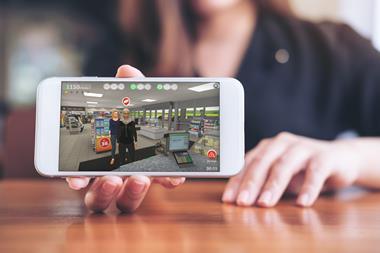With the metaverse offering retailers a whole new level of customer interaction, EY’s Thomas Harms takes a look at what firms can do to seize the moment
As a retailer, you know that being available to your customers wherever they are at any given moment means success.
By having a ubiquitous presence alongside consumers, you can be fully embedded in their lifestyles and become true collaborators with them, rather than mere suppliers.
Now the metaverse is promising to take the ability to “be where your customers are” to a whole new level.
The retail space of the future is evolving but retail in the metaverse is still at the experimental stage.
Several of the early metaverse stores are simply digital versions of physical outlets, offering visitors the chance to explore and fill a basket just like in the real world.
Many retailers are questioning whether the metaverse is here to stay or if it is a passing fad.
However, with a market forecast to reach $800bn (£644bn) by 2024, it should not be ignored, and the chances are it is shaping some of your customers’ expectations of the art of the possible right now.
With attitudes toward the metaverse likely to change as innovative new use cases emerge, I see three distinct stages of opportunity for retailers in this fast-evolving space.
1. Acting as gateways to brand discovery
In the metaverse, retailers can become consumers’ trusted curators across a range of brands, enabling chance discoveries without them feeling overwhelmed.
This mirrors how many retailers operate today, both physically and online. But it also demonstrates the important role retail plays in creating the right experience around products and services, as well as offering customers choice.
2. Extending virtual worlds
Retailers can build out their presence in the metaverse by using virtual spaces to drive gamified, social or event-driven shopping, where the transaction becomes a by-product of the experience.
Imagine shopping reinvented as a digital treasure hunt or as a livestreamed event.
Brands have opened virtual stores in popular multiplayer online games and some are now blurring the boundaries between selling physical and digital products in the metaverse.
3. Becoming co-creators
Retailers and brands can work together with consumers to create a blend of experience and product that bridges the physical and digital.
As consumers increasingly use the metaverse to design and create their own digital products, retailers can collaborate with brands and manufacturers to convert these into physical goods.
Equally, retailers and brands can partner to deliver entirely personalised branded experiences using augmented reality.
To navigate the future in a world that is rapidly changing, often unexpectedly, you will need to stop confining your channel strategies to ‘stores’ and ’ecommerce’.
Look at your channel approach holistically around ‘spaces’ to deliver a consistent, connected customer experience that gives people a reason to visit and spend time there.
To learn more, check out our point-of-view on this topic.
The views reflected in this article are my own and do not necessarily reflect the views of the global EY organisation or its member firms.
Thomas Harms is global retail leader at EY
































